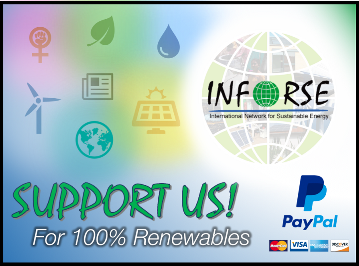|
|
|
|
|
|
|
|
|
|
|
|
|
|
|
|
|
|
|
|
|
| Follow Us: |
| Gaviotas - a Miracle | |
| As a journalist who has covered environmental disasters from Chernobyl to Antarctica’s ozone hole, the most hopeful sign I’ve seen that humans can live sanely and sustainably is a village in one of the most unlikely places: Colombia, a country whose name makes most people think of either cocaine, coffee, or civil war. Yet as Paolo Lugari, the Colombian founder of the village of Gaviotas, told me: “They always put social experiments in the easiest, most fertile places. We wanted the hardest place. If we could do it there, we could do it anywhere.” | |
| The Vision & the Challenge | |
| Almost three decades ago, Colombian Paolo Lugari, the brilliant son of a tropical geographer, flew across the Andes behind Bogota, and saw Colombia’s huge, nearly empty, rain-soaked eastern tropical plain stretching all the way to Venezuela. The soils were so thin that only low-nutrient grasses grew. The rivers were full of piranhas and malaria-bearing mosquitoes. But someday, Lugari realized, barren savannas like these would be the only place to put growing populations. This was a perfect setting, he decided, for a research station to design the ideal civilization for the tropics. In Bogota’s universities, he challenged engineers and soil engineers to join him. “Can you build a micro-turbine to tap the energy of a slow tropical stream?” he asked. “Can we get anything useful to grow in those soils?” It was important, he believed, that Third World people find their own answers. “All our development models have been created in countries with four seasons, with totally different conditions from tropical countries,” he argued. “When we import solutions from northern countries, not only don’t we solve our problems, but we import theirs.” | |
| The Solutions | |
| My drive to Gaviotas from Bogota took 16 hours by jeep over a rutted, muddy track through nearly empty savanna. It was also dangerous no-man’s-land, filled with guerrilla and paramilitary roadblocks. Then, what resemble aluminium sunflowers began to dot the landscape. These were delicate windmills. I came to a large pine forest, nearly 10,000 hectares, that should not have been growing from this infertile plain. Amid the trees was a cluster of low white buildings and colorful houses with dramatic, swooping roofs, all bearing solar collectors. Begun in 1971, Gaviotas was now a self-sufficient town of 200, financed by selling the alternative technology it has developed and by a clean, renewable forest industry that earned the United Nations’ 1997 World Zero Emissions Award. Their first problem was finding pure water. They invented hand pumps whose internal pistons were encased in plastic sleeves. By leaving the heavy piston stationary and lifting the lightweight sleeve instead, they found they could reach aquifers several times deeper than normal, and pumping was so easy they hooked them to children’s seesaws. Next came ultra-light windmills light enough to tap soft tropical breezes, but strong enough to withstand tropical storms; solar water heaters that work in the rain; and soil-free hydroponic systems to raise crops. They also built an all-solar hospital that uses underground wind ducts and hollow roof construction for self-cooling, and a kitchen equipped with their most expensive invention: solar-powered pressure cookers. But much cheaper is their solar “kettle,” which uses sunlight to sterilize water and a simple heat-exchanger to cool the purified water for immediate drinking. Gaviotas chose to not patent its inventions, so others could share them. Their tools have spread elsewhere in Latin America: Nearly 700 villages in Colombia alone now use their pumps. | |
| Sustainable Forest | |
| After years of trying, they finally found a plant that could survive Gaviotas’ thin, highly acidic soils. Caribbean pines from Honduras grew rapidly, and the Gaviotans learned they could harvest renewable bark resin for profit without cutting down their spreading forest. This natural resin replaces petroleum-based substances in paints, cosmetics, perfumes, and medicines. When distilled in Gaviotas’ pollution-free factory, its byproduct is marketable turpentine - and the boiler’s steam exhaust generates electricity. Besides providing a sustainable living, the pines have fostered what biologists call a miracle: In the shelter of these fast-growing trees, a tropical forest not seen for thousands of years in these savannas has regenerated. The 250 native plant species they have identified in the forest inspired them to begin an ethnobotanical research lab in their all-solar hospital, collaborating with local Guahibo Indians. Many Guahibos and rural peasants live at Gaviotas, riding to work on Gaviotas-designed savanna bicycles. Oasis of Imagination In spite of Colombia’s ongoing civil upheaval, drug wars, and ecological stresses, Gaviotas has evolved into a community of peace and sanity. It proves that even the leanest environments provide rich tools and resources if people choose to live sensibly. “The only deserts are deserts of the imagination,”says Paolo Lugari. “Gaviotas is an oasis of the imagination. Elsewhere they’re tearing down rainforests. We’re putting one back. If we can do it in Colombia, it can happen anywhere.” Alan Weisman is author of ‘Gaviotas: A Village to Reinvent the World’, published in 1998 | |

| |
| Published in Sustainable Energy News |
|
|
Go back to main page of ISSUE #22, Sustainable Energy News (16 pages) (1998-09-01) |
|
| Contact | |
| |
INFORSE Secretariat Klosterport 4F, 1. floor DK-8000 Aarhus C Denmark Phone: +45 86 22 70 00 Twitter: INFORSE_org Facebook: INFORSE Web: inforse.org E-mail: ove@inforse.org |
